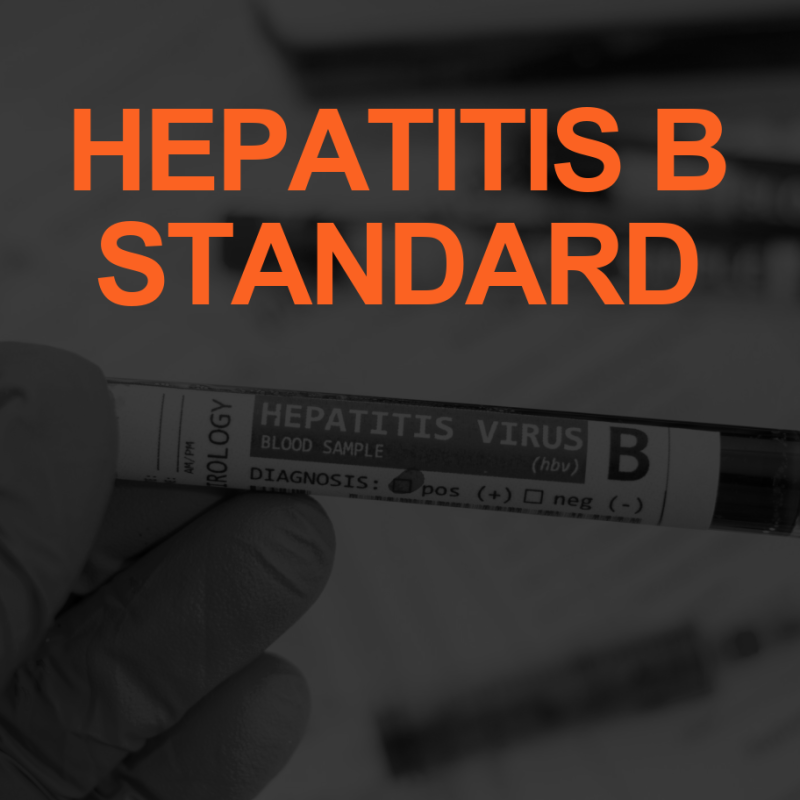
According to OSHA’s bloodborne pathogen standards, the hepatitis B vaccination series must be made available to all employees who have occupational exposure. The employer does not have to make the hepatitis B vaccination available to employees who have previously received the vaccination series, who are already immune as their antibody tests reveal, or who are prohibited from receiving the vaccine for medical reasons.
The hepatitis B vaccination must be made available within 10 working days of initial assignment, after appropriate training has been completed. This includes arranging for the administration of the first dose of the series.
The employer cannot require an employee to take a pre-screening or post-vaccination serological test. An employer, may however, decide to make pre-screening available at no-cost to the employee. Routine post-vaccination serological testing is not currently recommended by the Centers for Disease Control (CDC) unless an employee has had an exposure incident, and then it is also to be offered at no cost to the employee.
Declining the Hepatitis B Vaccination Series
If an employee declines the hepatitis B vaccination series, the employer must ensure that the employee signs a hepatitis B vaccine declination. The declination’s wording must be identical to that found in Appendix A of 29 CFR 1910.1030. A photocopy of Appendix A of the standard may be used as a declination form, or the words can be typed or written onto a separate document.
Employees have the right to refuse the hepatitis B vaccine and/or any post-exposure evaluation and follow-up. It is important to note, however, that the employee needs to be properly informed of the benefits of the vaccination and post-exposure evaluation through training. The employee also has the right to decide to take the vaccination at a later date if he or she so chooses. The employer must have the vaccination available at that time.
Note: The US Public health Service does not recommend routine booster doses of hepatitis B vaccine, they are not required at this time. However, if a routine dose of hepatitis B vaccine is recommended by the US Public health Service at a future date, such booster doses must be made available at no cost to those eligible employees with occupational exposure.
Infectivity
In the event of an exposure incident, the employer must identify and document the source of the individual if known, unless the employer can establish that identification is not feasible or is prohibited by state or local law. The source individual’s blood must be tested as soon as feasible, after consent is obtained, in order to determine HIV or HBV infectivity. The information on the source individual’s HIV and HBV testing must be provided to the evaluating health care professional. Also, the results of the testing must be provided to the exposed employee. The exposed employee must be informed of applicable laws and regulations concerning disclosure of the identity and infectious status of the source individual.
If consent cannot be obtained and is required by state law, the employer must document in writing that consent cannot be obtained. When the source individual’s consent is not required by law, the source individual’s blood if available shall be tested and the results documented.
When consent is obtained, the exposed employee’s blood is collected and tested as soon as feasible for HIV and HBV serological status. If the employee consents to the follow-up evaluation after an exposure incident, but does not give consent for HIV serological testing, the blood sample must be preserved for 90 days. If within the 90 days of exposure incident, the employee elects to have the baseline sample tested for HIV, testing must be done as soon as feasible.
The employer must obtain and provide the employee a copy of the evaluating health care professional’s written opinion within 15 days of completion of the evaluation. The health care professional’s written opinion of hepatitis B is limited to whether hepatitis B vaccination is indicated and if the employee received the vaccination. The written opinion for post-exposure evaluation must include information that the employee has been informed of the results of the evaluation and told about any medical conditions resulting from exposure that may further require evaluation and treatment. All other findings of diagnoses must be kept confidential and not included in the written report.
Post Exposure Counseling
The standard requires that post-exposure counseling be given to employees following an exposure incident. Counseling should include US Public Health Service recommendations for prevention of HIV. These recommendations include refraining from blood, semen, or organ donation; abstaining from sexual intercourse or using measures to prevent HIV transmission during sexual intercourse; and refraining from breastfeeding infants during the follow-up period. In addition, counseling must be made available regardless of the employee’s decision to accept serological testing.
OSHA 200 Log
An occupational bloodborne pathogen’s exposure incidents (e.g. lacerations, splashes) must be recorded on an OSHA 200 log as an injury if the incident results in one of the following:
- The incident is work-related and involves the loss of consciousness, a transfer to another job, or restriction of work or motion.
- The incident results in recommendation of medical treatment (e.g. hepatitis B immune globulin, hepatitis B vaccine or zidovudine).
- The incident results in the diagnosis of seroconversion. The serological status of the employee is not recorded on the OSHA 200 log.
Summary
Bloodborne Pathogen standard applies to workers that have occupational exposure to human blood or other potentially infectious materials (OPIM) as defined in paragraphs (a) and (b) of 29 CFR 1910.1030 and requires the use of universal precautions to prevent contact with these materials. It is the likelihood that a trained first aid provider could have ‘occupational exposure’ that determines the applicability of the Bloodborne Pathogen Standard. The standard defines ‘occupational exposure’ as reasonably anticipated eye, mucous membrane, or parenteral contact with blood or OPIM that may result from the performance of an employee’s duties, 1910.1030(b). Persons performing CPR are reasonably anticipated to have exposure to blood and OPIM. Therefore, an employee trained in the use of AED and/or CPR and is identified by the employer to render first aid as part of his or her duties, there is an anticipated ‘occupational exposure’ and the Bloodborne pathogen Standard applies.
The hepatitis B vaccination series must be made available to all employees who have occupational exposure. The employer does not have to make the hepatitis B vaccination available to employees who have previously received the vaccination series, who are already immune as their antibody tests reveal, or who are prohibited from receiving the vaccine for medical reasons






